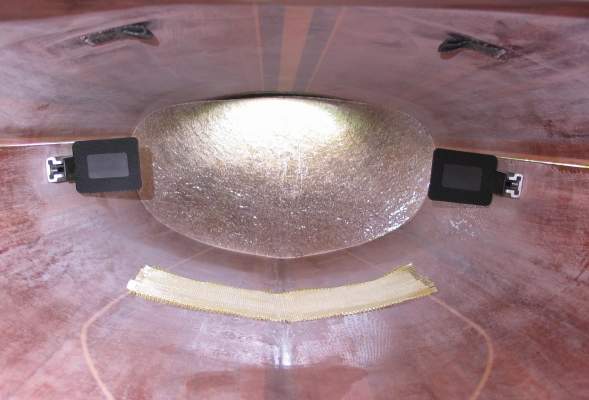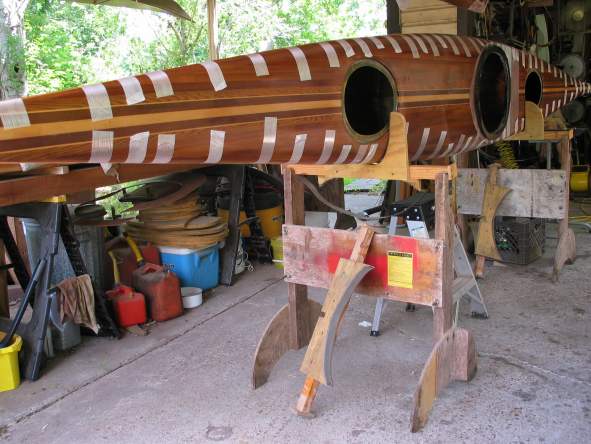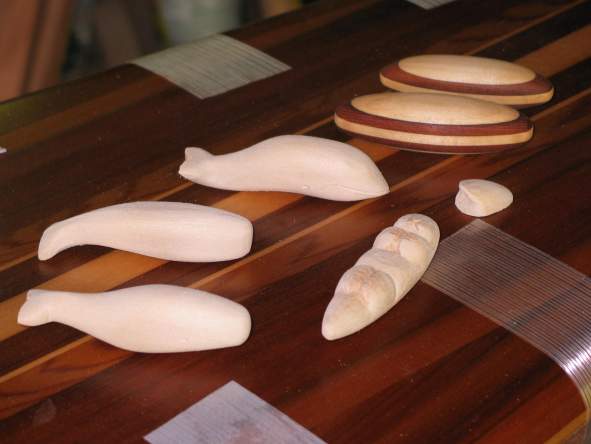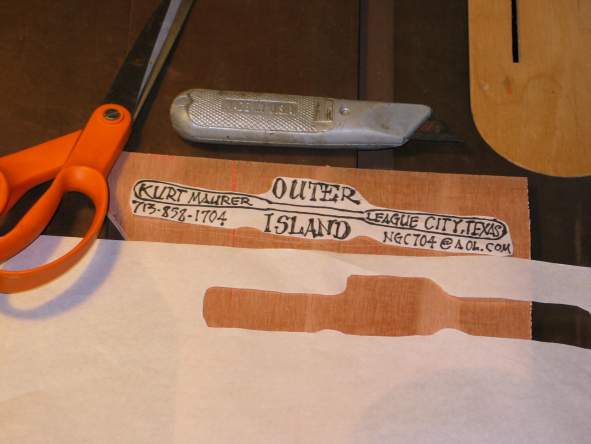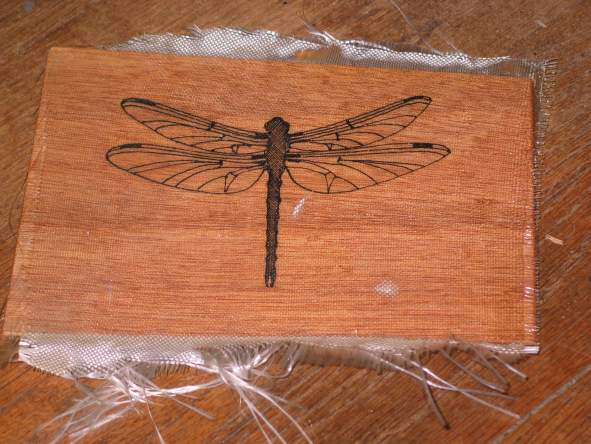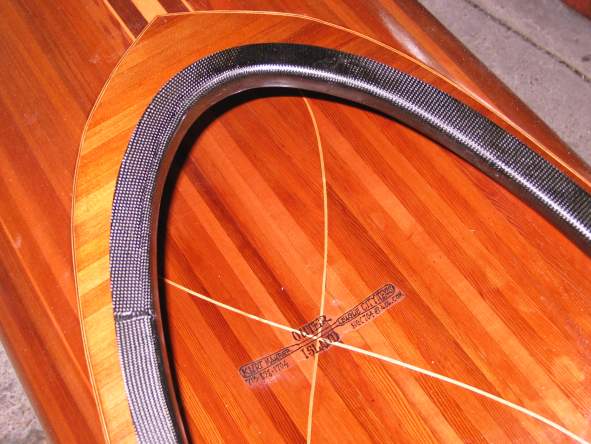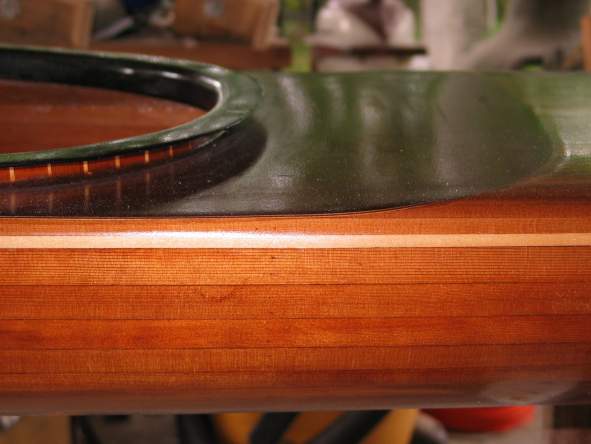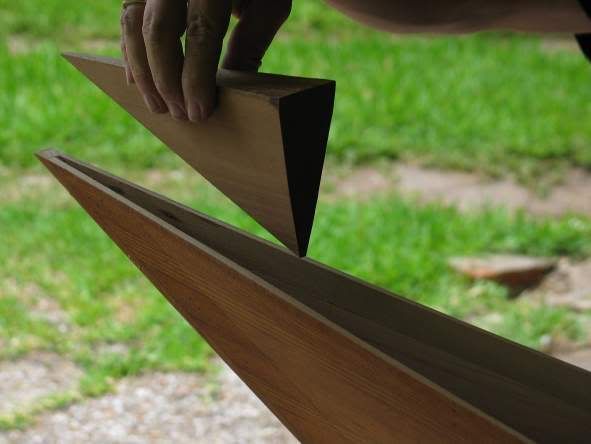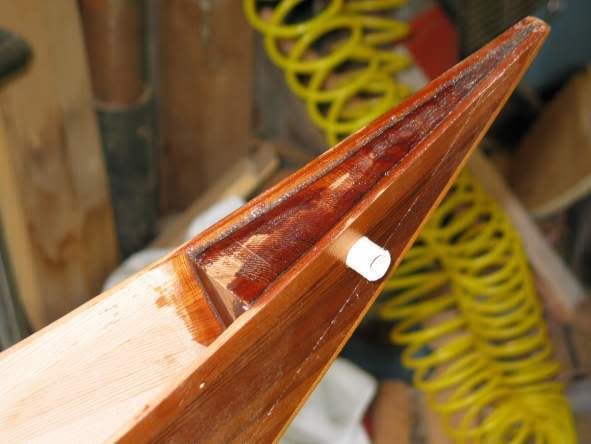It's a huge milestone, right up there with completion of stripping. All the clutter suddenly becomes a BOAT, and one can begin to see blinding light at the end of the tunnel. It is sweet moment in boat building; very sweet indeed.
There are several last things that need to be done beforehand, and approximately half of them get thought of after the fact. Here are the ones that got thought of before, when it was yet useful to have such thoughts: locate foot braces, add wear pad for heels, add underdeck bungee anchor loops, preliminary fit bulkheads.
I'm using kevlar for the wear pad, and have topped it with 9 oz plain weave e-glass. The foot braces are 10" Yakimas, as ordered just like that from Sweet Composites, a top-favorite vendor.
